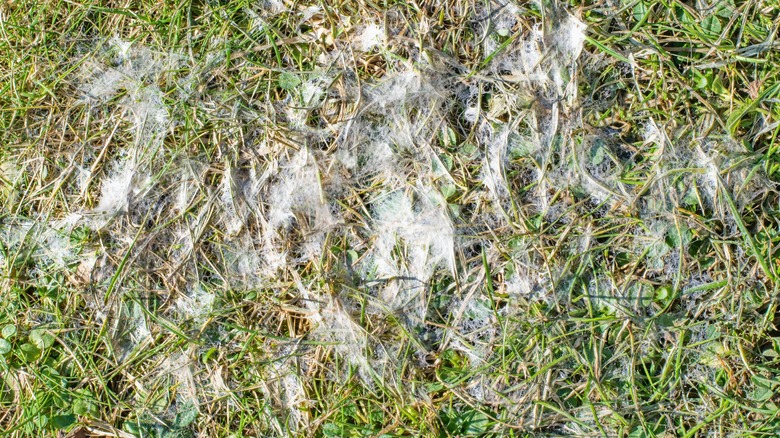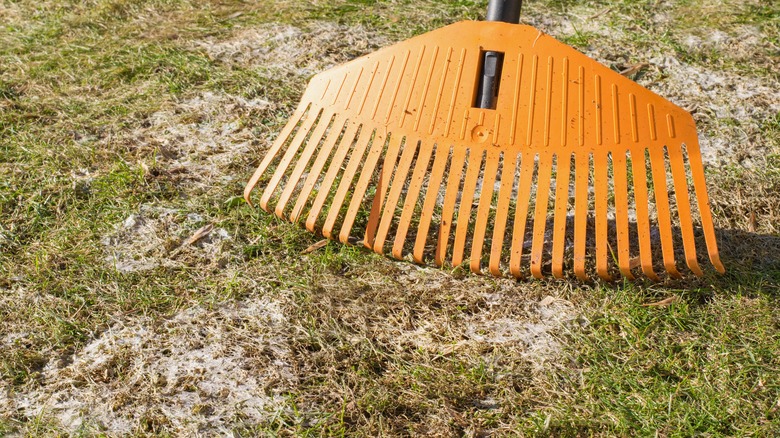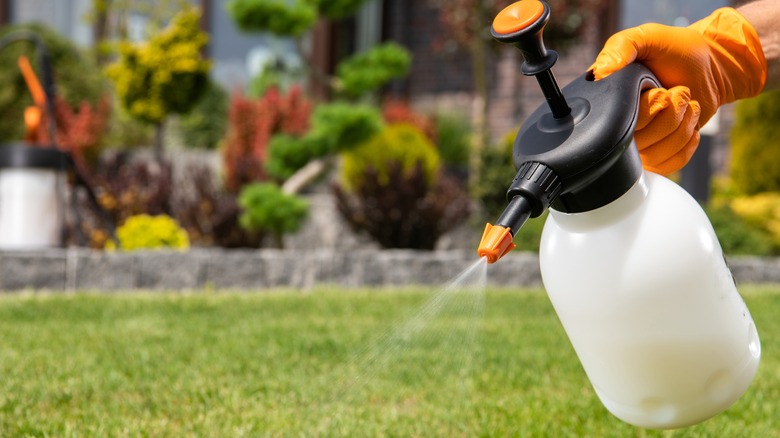How To Treat Your Lawn For Snow Mold
As winter's icy grip loosens and snow thaws, you might be faced with snow mold, a sneaky fungal lawn disease that leads to unwelcome discolored patches on your otherwise pristine green lawns. Depending on the fungal variant, these patches may appear pink or gray and can range up to one foot in diameter. Besides damaging your grass, this lawn disease can trigger allergies and recur if not appropriately treated. Luckily, the snow mold dries up on its own when the temperatures rise and reach 45 to 60 degrees Fahrenheit, making it easier for you to treat your lawn.
Snow mold generally appears in zones experiencing extremely cool fall temperatures, where snow accumulates on still-damp lawns. Moreover, its growth can accelerate if the lawn has been treated excessively with nitrogen-rich fertilizers or covered by moisture-retaining debris, such as straws and leaves. So as soon as the lawn dries up, gently rake up the discolored grass patches to make way for better growth. However, if you have pink patches, you might need to reseed your lawn.
Ways to deal with snow mold
Snow mold is a cold-tolerant disease that causes white to grayish-white discolored circular spots, also known as speckled or gray snow mold or the Typhula blight. These straw-colored patches may eventually turn bluish-gray and black, with some developing a silver crust lasting until late May or early June. As the gray mold's impact is mostly limited to blades, you can simply rake your space to free up the matted grass and allow it to dry quickly, deactivating the fungus.
Alternatively, you may notice whitish-pink patches when your grass is exposed to sunlight, called pink snow mold or the Fusarium patch. It is smaller but more harmful than gray mold and requires a slightly different treatment response. Initially 1-to-3-inch-wide water-soaked round spots, the pink mold later grows into 8-to-12-inch ringlike tan or gray patches with orange-brown borders. Besides damaging the blades, pink snow mold can kill the grassroots, permanently harming your lawn. In such situations, the only solution is to remove the dead patch and reseed the area with mold-resistant grasses after fertilizer and fungicide treatment.
How to prevent snow mold
Treating your lawn for snow mold is a temporary fix. The real way to deal with snow mold is to prevent its occurrence in the first place. Following balanced fertilization practices, such as avoiding nitrogen at least six weeks before the frost season hits and judiciously using potassium and phosphorus in soils per requirements, can help stave off snow mold damage. Further, avoid synthetic and organic mulches and prevent thatch accumulation beyond ¾ of an inch in thickness. You can also avoid snow buildup by installing snow fences and evergreen windbreaks.
While fungicides are not useful once snow mold hits, they come in handy before winter. You must apply protective fungicides to previously mold-infested areas before frost and reapply them once or twice during the winter when snow begins to melt. Another option is to limit grass height to lower its moisture retention capacity. For instance, as bentgrasses incur more damage from snow mold, they can be cut down to half an inch in height, while bluegrasses can be maintained up to 2 inches. Ensuring adequate drainage through proper grade sloping and filling low areas will prevent water pooling.


